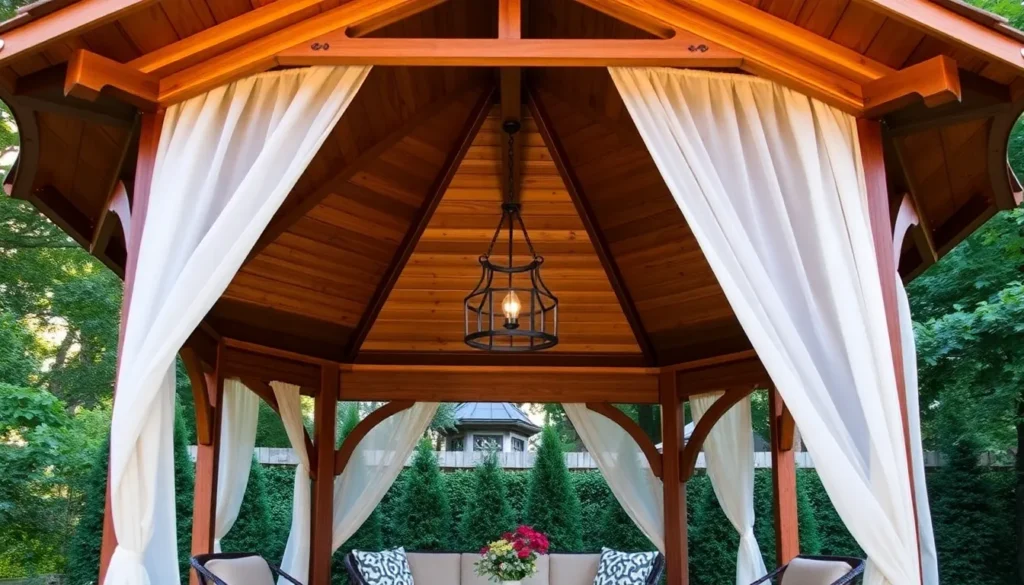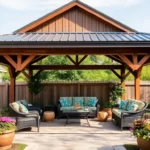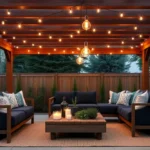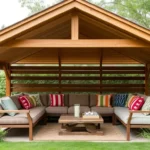Transforming your backyard into a serene retreat is more achievable than you might think, and a gazebo could be the perfect centerpiece. Whether you’re a novice homeowner dreaming of a cozy outdoor nook or an experienced designer ready to add a new dimension to your garden, this guide will walk you through the essentials of selecting, installing, and enjoying a gazebo.
Imagine sipping your morning coffee surrounded by nature or hosting a dinner under the stars, protected from the elements but still very much a part of the great outdoors. In this article, we’ll unravel the different styles, materials, and placement tips to help you create an inviting outdoor haven that’s both functional and beautiful. Let’s make the vision of your idyllic backyard getaway a reality.
Choose the Perfect Gazebo Style
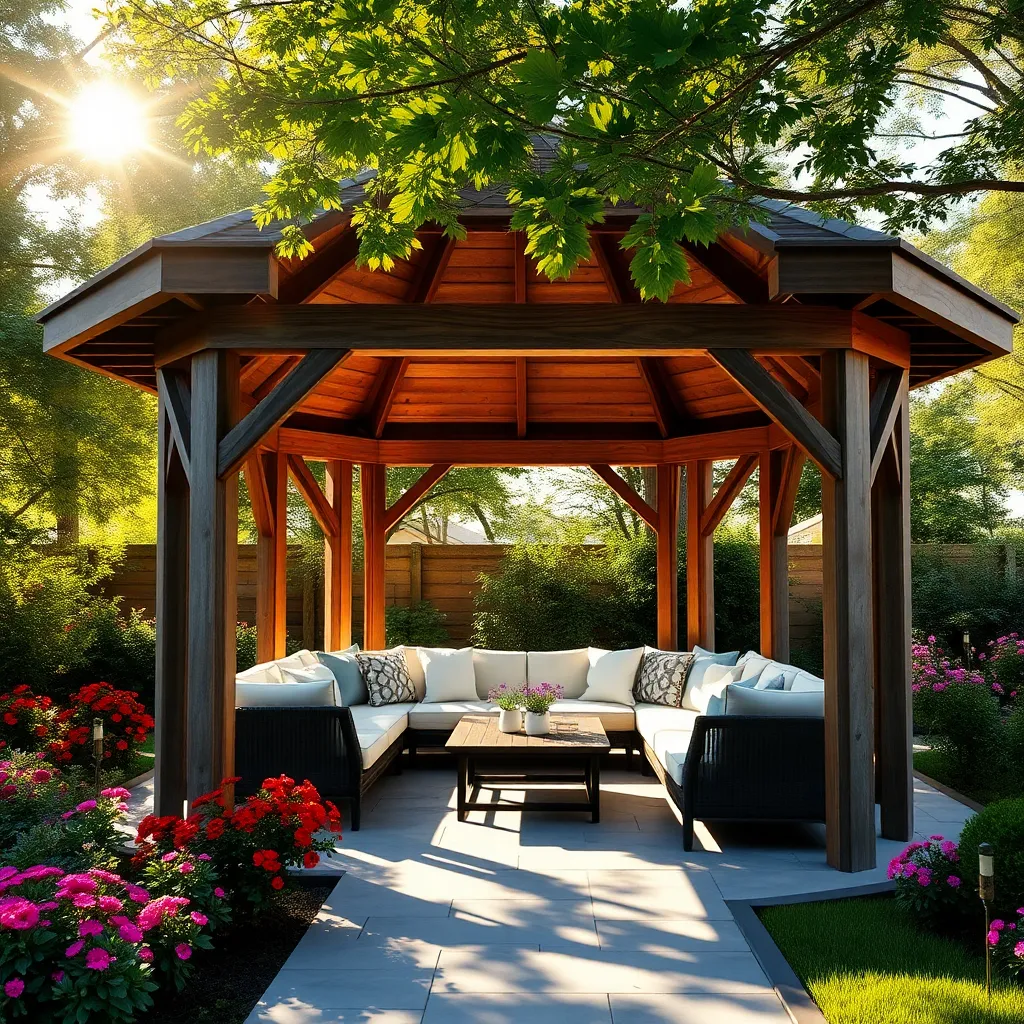
Choosing the perfect gazebo style begins with understanding your backyard’s unique needs. For a classic look, consider a traditional wooden gazebo, which offers a timeless charm and can be made from durable woods like cedar or redwood. If you prefer minimal maintenance, opt for a metal gazebo, often made from aluminum or steel, providing strength and a modern aesthetic. Key design elements to consider include the roof shape, such as a pagoda or flat roof, and the size, with 10×10 feet being ideal for most backyards. Remember to ensure the gazebo complements your existing landscape and home architecture.
For those seeking more advanced options, explore gazebos with integrated features. Built-in benches or planters can enhance functionality and aesthetics, while screens or curtains add privacy and protection from the elements. When considering materials, think about your climate: metal gazebos withstand harsh weather, while vinyl options offer a versatile, weather-resistant choice.
- Consider adding a foundation of stone or concrete for stability.
- Opt for a gazebo kit if you’re looking for an easier DIY project.
By tailoring your choices to both style and practicality, you create a backyard retreat that’s uniquely yours.
Measure and Mark Your Space
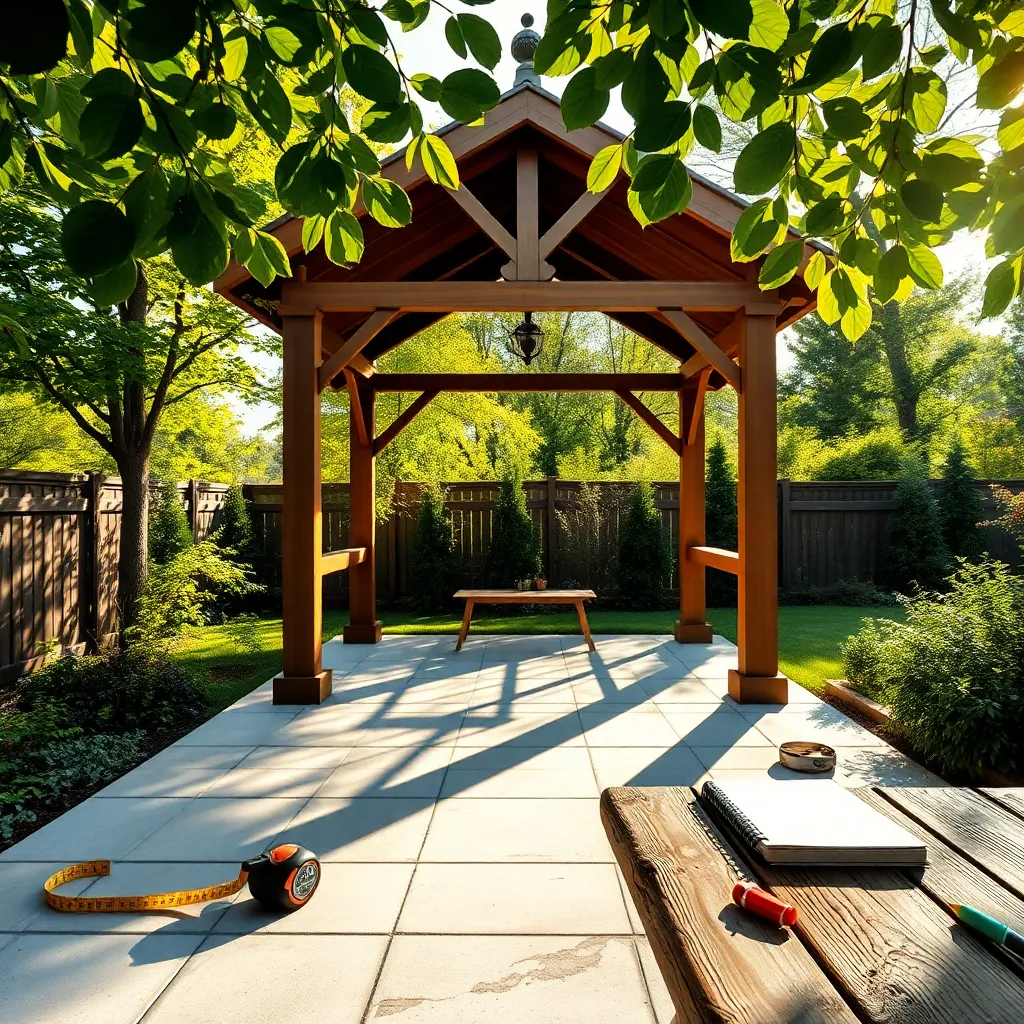
Before you start building your gazebo, it’s essential to measure and mark your space accurately to ensure a perfect fit and a stable structure. Begin by using a measuring tape to determine the exact dimensions of the area where you plan to install the gazebo. Consider the size of your yard and any other landscaping features. Once measurements are taken, use marking paint or stakes and string to outline the area. This will give you a clear visual guide and help maintain straight lines during construction.
Keep in mind the importance of leaving space for movement and future landscaping around the gazebo. If you’re planning to install a gazebo kit, check the manufacturer’s recommendations for minimum clearance around the structure. For those with a more advanced skill set, consider incorporating a slight slope in the design to facilitate water runoff, using materials like gravel or sand for the base to improve drainage. By executing these steps thoughtfully, you ensure a sturdy and aesthetically pleasing addition to your backyard.
Gather Essential Building Materials
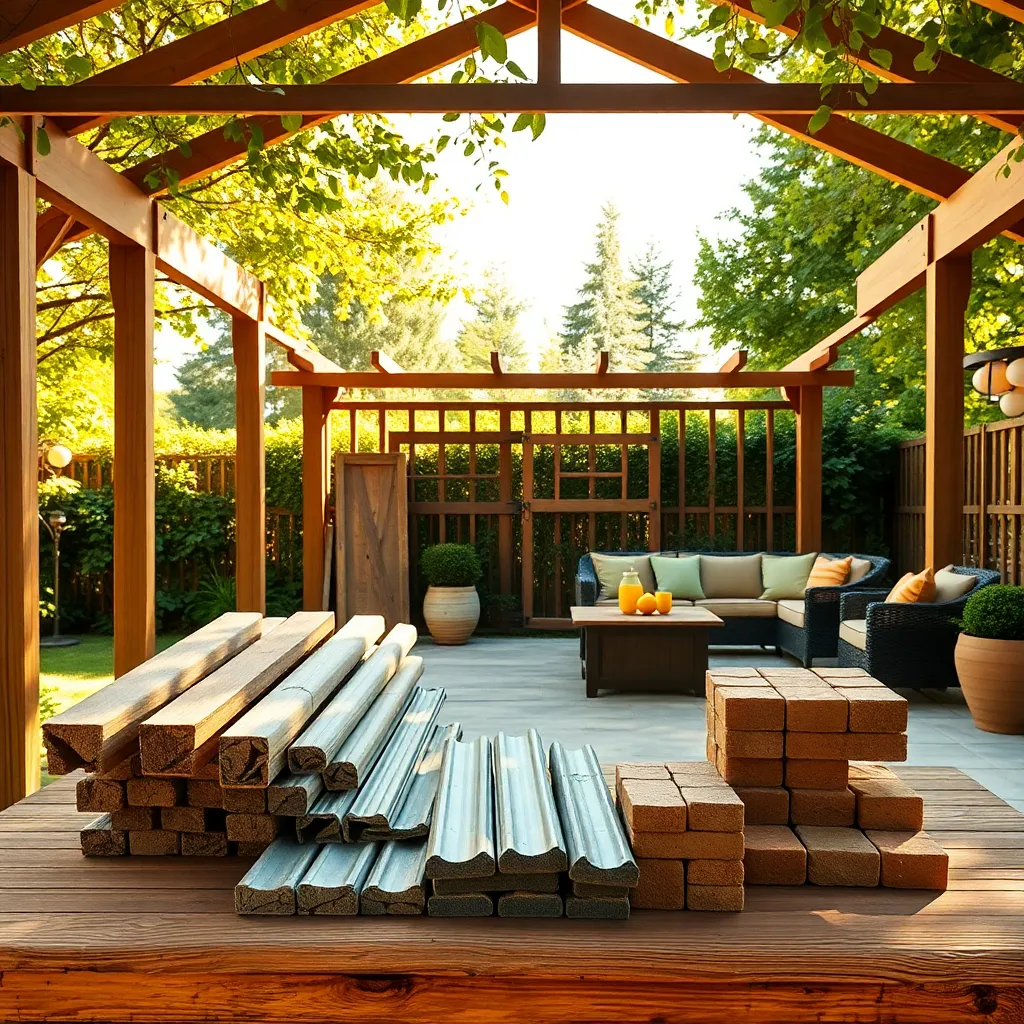
Once you’ve measured and marked your space, it’s time to gather the essential building materials for your gazebo. Start with the basics: you’ll need pressure-treated lumber for the frame, as it’s durable and resistant to decay. Consider 4×4 posts for the main supports and 2×6 beams for the roof framework. If you want to add a touch of elegance, consider using cedar or redwood, which not only withstands the elements well but also adds a natural beauty to your structure.
Don’t forget about the hardware essentials, such as galvanized screws and bolts, which are crucial for withstanding outdoor conditions. For roofing options, you might opt for shingles that match your home or a metal roof for a modern look. If you plan to use the gazebo in cooler months, consider adding side panels or curtains to help block wind.
- Pro Tip: Use a level and carpenter’s square frequently during construction to ensure precision and stability.
These choices will ensure your gazebo is both functional and visually appealing.
Assemble the Gazebo Framework
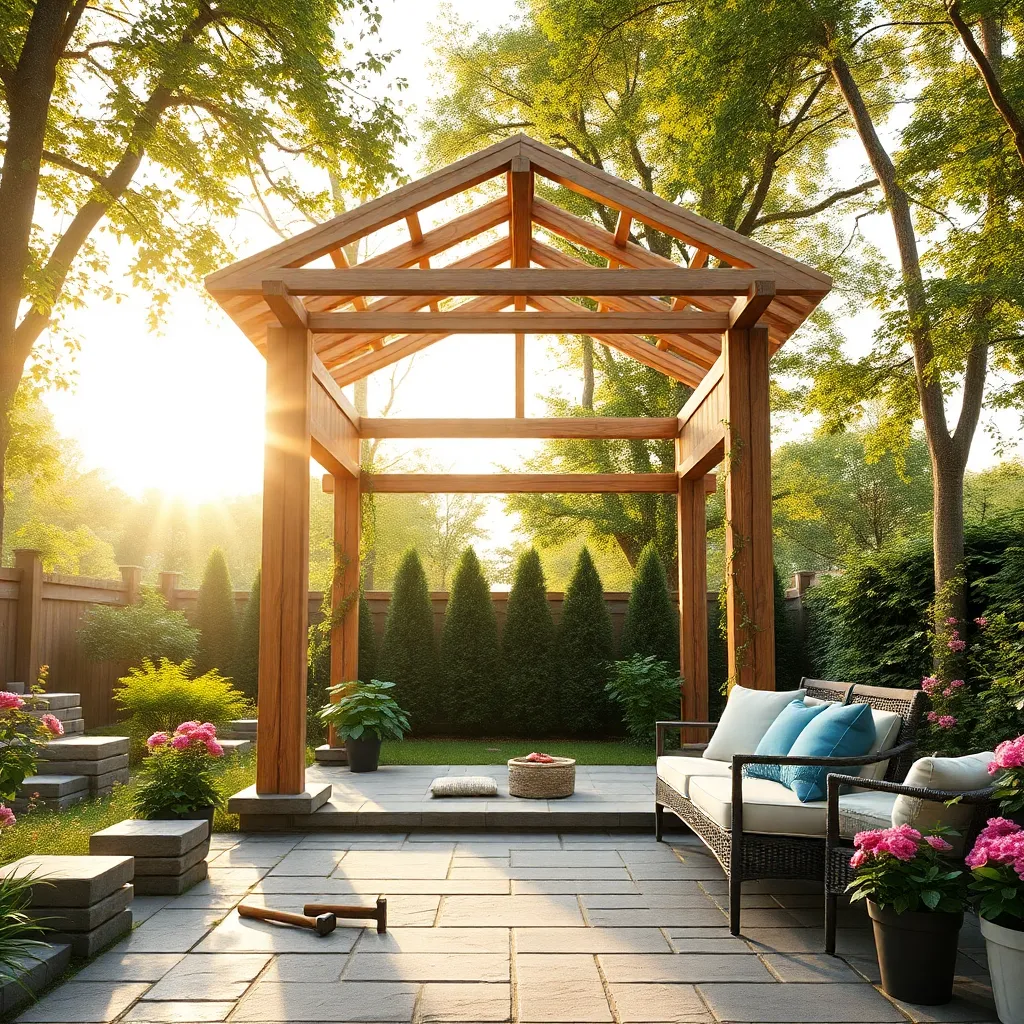
To begin assembling your gazebo framework, first lay out all your materials to ensure everything is easily accessible. Start by connecting the corner posts to the beams using sturdy metal brackets for added stability. Ensure all connections are tightly secured to prevent any wobbling or instability. If you’re a beginner, consider using a pre-cut gazebo kit, which simplifies assembly with pre-drilled holes and labeled parts. This can save you time and reduce frustration.
For a more advanced touch, use a level to guarantee that each beam is perfectly horizontal, which will enhance the overall appearance and durability of your structure. Measure twice, cut once when trimming any wooden components to fit your specific space. As you progress, frequently check that the framework aligns with your initial design plans. This attention to detail will lay a solid foundation for your gazebo, making the rest of the assembly process smoother and more enjoyable. Here are a few quick tips to keep in mind:
- Use rust-resistant screws and bolts for longevity.
- Consider adding cross-bracing for extra support, especially in areas prone to high winds.
Install Roof and Decorative Elements
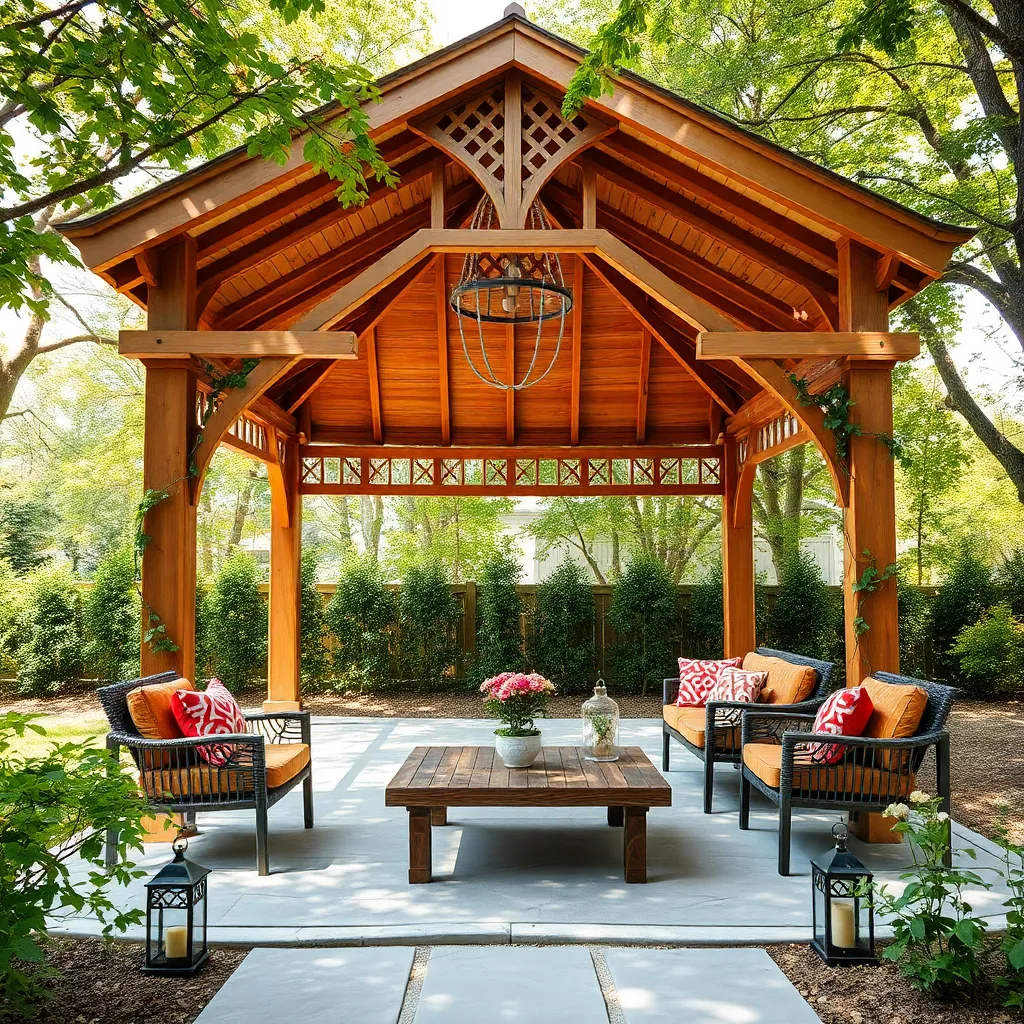
Once the framework is complete, it’s time to install the roof of your gazebo, which not only provides shade but also adds to the structure’s aesthetic appeal. Consider using durable materials like polycarbonate panels or metal roofing for long-lasting protection against the elements. For a classic look, wooden shingles are a great choice, offering both charm and functionality. Ensure that your roof has a slight pitch to allow water to run off easily, preventing any potential damage from pooling.
To enhance the beauty of your gazebo, focus on decorative elements that reflect your personal style. You might add intricate lattice panels or decorative trims to the railings for an elegant touch. Installing hanging plants or fairy lights can also create a cozy, inviting atmosphere. For those looking to add a bit more sophistication, consider painting the structure with weather-resistant paint in a color that complements your outdoor space. These finishing touches will not only personalize your gazebo but also make it a standout feature in your backyard.
Conclusion: Creating Beautiful Outdoor Spaces
In exploring the ‘Beginner’s Guide to Backyard Gazebos,’ we’ve uncovered five key relationship concepts: the importance of creating shared spaces, the power of intentional connection, the art of compromise, embracing creativity in nurturing relationships, and the significance of routine check-ins to strengthen bonds. These principles are more than just gazebo-building tips; they are foundational elements to cultivating a thriving relationship.
As an actionable next step, choose one of these principles to implement this week. Perhaps start by designing a cozy nook in your backyard that serves as a dedicated space for meaningful conversations. Remember, small changes can spark significant transformation.
Don’t let these insights slip away—bookmark this guide to revisit whenever you need a reminder of how to nurture your relationship. By doing so, you’ll have a handy reference to keep your relationship flourishing.
Looking forward, remember that every effort you make in strengthening your bond lays the groundwork for lasting happiness and connection. Let this guide be a beacon of inspiration as you continue to build a fulfilling and resilient partnership. Embrace the journey, and watch your relationship thrive in new and exciting ways.

